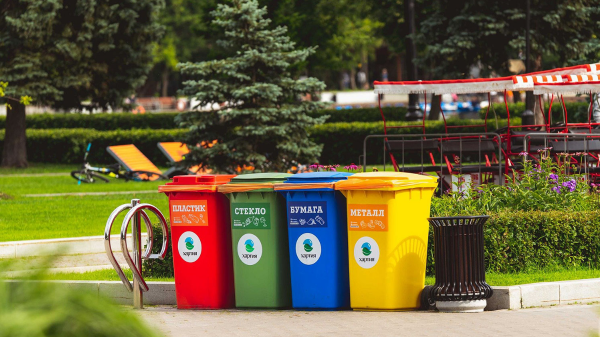I have one of these in my garage; no doubt you do too. Mine is a green bin with a black lid and “Recycling Only” stamped on the top. I put it out dutifully with the regular garbage.
I try to be conscientious with recycling (I even take the wire hangers back to the dry cleaner). But I often ask myself, “Is this anything more than a sop to my conscience?” That is, is it doing any good?
Similar thoughts have occurred to the California Legislature, which has passed a law to ensure that if a producer says something is recyclable, it actually is.
The bill states, “It is the public policy of the state that claims related to the recyclability of a product or packaging be truthful and that consumers deserve accurate and useful information related to how to properly handle the end of life of a product or packaging.”
Because that paradoxically circular triangle on the bottom of your clamshell (known as the “chasing arrows” symbol) has very little to do with whether it will actually be recycled.

What is and what isn’t? “Today 9-12 percent of plastic is recycled– practically all bottles. Clamshells are not recycled,” contends Shannon Boase, director of new market development for CKF, Inc., a Canadian packaging company.
Apart from the confusion that this causes to me personally (which bin do I put the clamshells in?), this fact, along with the new California law, indicates that in the future, the packaging industry will be held to stricter standards of accountability.
In short, the chasing arrows will cease to serve as a talisman to ward off any sense of environmental responsibility.
The produce industry is faced with a tension between two conflicting forces: current marketing trends point toward more packaged than bulk produce. After all, if you’re going to buy some apples online, you’re probably going to feel better about their delivery if they’re protected by a clamshell or something like it.
Yet at the same time, consumer sentiment is moving against the trash problem created by packaging. (My personal pet peeve is children’s toys: it often takes longer to open the package than the child has to play with the toy until it breaks.)
One possibility available now is the How2Recycle program, instituted by the Sustainable Packaging Coalition.
Here’s how it works: “Brand owners . . . become members of How2Recycle for a modest annual flat fee. Then, they place the How2Recycle label on all, or a selection of their brands’ packaging—it’s up to them which packages they label. Every package that features a How2Recycle label undergoes an individualized recyclability assessment based on detailed packaging specifications that the company sends How2Recycle via its Member Platform.”
The future seems likely: more and more consumers are going to be evaluating a product on the basis of the recyclability of its packaging.
This will not be the only criterion, of course, but it’s shaping up to be an increasingly important one.
What kind of business decision does this point to? In matters like this, it’s better to be ahead of the pack than lagging behind.



